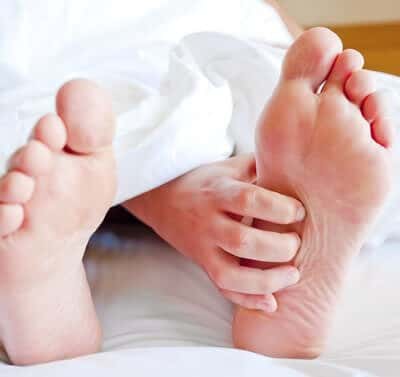
A new medication or a change in medicine can sometimes lead to an uncomfortable or undesirable side effect. Often, the health care provider’s response may be to write another prescription that can ease the discomfort.
Sometimes a home remedy is just the ticket. Keep in mind, though, that even home remedies can sometimes cause unwanted reactions. That is what this reader discovered.
Soap for Leg Cramps:
Q. I have recently begun using an inhaler for asthma and started getting leg cramps at night. I remembered the remedy with soap under the sheet and tried it. It worked almost immediately.
Five days later, I broke out in a red itchy rash above my ankle. I stopped using Dove soap and waited a few days until the rash went away.
Then I used Irish Spring, with the same results. What did I do wrong?
How Could Soap Cause a Red Itchy Rash?
A. You did nothing wrong, but you may be especially susceptible to chemicals in soap that evaporate into the air. Fragrances and other volatile compounds in soap could pass through the sheet and sensitize your skin, leading to a rash.
A chemist suggested to us several years ago that limonene, a common volatile ingredient in soap, might be responsible for the anti-leg cramp effect. It can also cause contact dermatitis in vulnerable individuals.
Other Approaches to Easing Leg Cramps:
A surprising number of medications can trigger nighttime leg cramps as adverse reactions, in addition to the benefit the drugs provide. Beta-agonists that open airways, like your asthma inhaler, are among them. Others include beta blockers such as metoprolol or atenolol, prescribed to lower blood pressure or protect the heart; diuretics such as bumetanide (Bumex) or furosemide (Lasix) prescribed for congestive heart failure or hypertension; thiazide diuretics such as hydrochlorothiazide or chlorthalidone, a first line in lowering elevated blood pressure; and statin drugs such as atorvastatin (Lipitor), lovastatin, rosuvastatin (Crestor) or simvastatin (Zocor).
There are no prescription drugs designed to treat nighttime leg cramps, so doctors are limited in their ability to manage this side effect. They may change the prescription, but if the drug is medically necessary and alternatives are less desirable, they will probably recommend non-drug approaches such as increasing potassium intake (by eating bananas or drinking low-sodium V-8 juice) or stretching the muscles of the leg before bedtime.
These approaches can be helpful. There are others that may be useful as well, such as sipping a bit of pickle juice or swallowing a spoonful of yellow mustard when a cramp hits. You can learn more about these in our Guide to Leg Pain, which covers both conventional and unusual ways to ease a leg cramp in the middle of the night. Most will not leave you with a red itchy rash!

